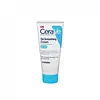What's inside
What's inside
 Key Ingredients
Key Ingredients

 Benefits
Benefits

 Concerns
Concerns

 Ingredients Side-by-side
Ingredients Side-by-side

Water
Skin ConditioningUrea
BufferingCetyl Alcohol
EmollientGlyceryl Stearate Se
EmulsifyingCetearyl Alcohol
EmollientNiacinamide
SmoothingButyrospermum Parkii Butter
Skin ConditioningC12-13 Alkyl Lactate
EmollientPEG-100 Stearate
Glycerin
HumectantBehentrimonium Methosulfate
Dimethicone
EmollientTriacetin
AntimicrobialCeramide NP
Skin ConditioningCeramide AP
Skin ConditioningCeramide EOP
Skin ConditioningCarbomer
Emulsion StabilisingSodium Lactate
BufferingSalicylic Acid
MaskingSodium Hydroxide
BufferingSodium Lauroyl Lactylate
EmulsifyingSodium Hyaluronate
HumectantCholesterol
EmollientPhenoxyethanol
PreservativeDisodium EDTA
Capryloyl Salicylic Acid
ExfoliatingHydroxyacetophenone
AntioxidantCitric Acid
BufferingLactic Acid
BufferingPhytosphingosine
Skin ConditioningXanthan Gum
EmulsifyingEthylhexylglycerin
Skin ConditioningWater, Urea, Cetyl Alcohol, Glyceryl Stearate Se, Cetearyl Alcohol, Niacinamide, Butyrospermum Parkii Butter, C12-13 Alkyl Lactate, PEG-100 Stearate, Glycerin, Behentrimonium Methosulfate, Dimethicone, Triacetin, Ceramide NP, Ceramide AP, Ceramide EOP, Carbomer, Sodium Lactate, Salicylic Acid, Sodium Hydroxide, Sodium Lauroyl Lactylate, Sodium Hyaluronate, Cholesterol, Phenoxyethanol, Disodium EDTA, Capryloyl Salicylic Acid, Hydroxyacetophenone, Citric Acid, Lactic Acid, Phytosphingosine, Xanthan Gum, Ethylhexylglycerin
Water
Skin ConditioningPropanediol
SolventPolysorbate 20
EmulsifyingHamamelis Virginiana Water
AstringentGlycerin
HumectantButylene Glycol
HumectantSalicylic Acid
MaskingAlcohol Denat.
AntimicrobialCocamidopropyl Betaine
CleansingPhenoxyethanol
PreservativeParfum
MaskingXanthan Gum
EmulsifyingSodium Chloride
MaskingEthylhexylglycerin
Skin ConditioningDisodium EDTA
Alcohol
AntimicrobialButylphenyl Methylpropional
PerfumingLinalool
PerfumingHexyl Cinnamal
PerfumingCitronellol
PerfumingGeraniol
PerfumingAlpha-Isomethyl Ionone
PerfumingHydroxycitronellal
PerfumingEugenol
PerfumingWater, Propanediol, Polysorbate 20, Hamamelis Virginiana Water, Glycerin, Butylene Glycol, Salicylic Acid, Alcohol Denat., Cocamidopropyl Betaine, Phenoxyethanol, Parfum, Xanthan Gum, Sodium Chloride, Ethylhexylglycerin, Disodium EDTA, Alcohol, Butylphenyl Methylpropional, Linalool, Hexyl Cinnamal, Citronellol, Geraniol, Alpha-Isomethyl Ionone, Hydroxycitronellal, Eugenol
 Reviews
Reviews

Ingredients Explained
These ingredients are found in both products.
Ingredients higher up in an ingredient list are typically present in a larger amount.
Disodium EDTA plays a role in making products more stable by aiding other preservatives.
It is a chelating agent, meaning it neutralizes metal ions that may be found in a product.
Disodium EDTA is a salt of edetic acid and is found to be safe in cosmetic ingredients.
Learn more about Disodium EDTAEthylhexylglycerin (we can't pronounce this either) is commonly used as a preservative and skin softener. It is derived from glyceryl.
You might see Ethylhexylglycerin often paired with other preservatives such as phenoxyethanol. Ethylhexylglycerin has been found to increase the effectiveness of these other preservatives.
Glycerin is already naturally found in your skin. It helps moisturize and protect your skin.
A study from 2016 found glycerin to be more effective as a humectant than AHAs and hyaluronic acid.
As a humectant, it helps the skin stay hydrated by pulling moisture to your skin. The low molecular weight of glycerin allows it to pull moisture into the deeper layers of your skin.
Hydrated skin improves your skin barrier; Your skin barrier helps protect against irritants and bacteria.
Glycerin has also been found to have antimicrobial and antiviral properties. Due to these properties, glycerin is often used in wound and burn treatments.
In cosmetics, glycerin is usually derived from plants such as soybean or palm. However, it can also be sourced from animals, such as tallow or animal fat.
This ingredient is organic, colorless, odorless, and non-toxic.
Glycerin is the name for this ingredient in American English. British English uses Glycerol/Glycerine.
Learn more about GlycerinPhenoxyethanol is a preservative that has germicide, antimicrobial, and aromatic properties. Studies show that phenoxyethanol can prevent microbial growth. By itself, it has a scent that is similar to that of a rose.
It's often used in formulations along with Caprylyl Glycol to preserve the shelf life of products.
Salicylic Acid (also known as beta hydroxy acid or BHA) is a well-known ingredient for treating skin that struggles with acne and clogged pores. It exfoliates both the skin's surface and deep within the pores to help clear out buildup, control oil, and reduce inflammation.
Unlike AHAs (alpha hydroxy acids), salicylic acid is oil-soluble. This allows it to penetrate into pores which makes it especially effective for treating blackheads and preventing future breakouts.
Salicylic acid is also known for its soothing properties. It has a similar structure to aspirin and can calm inflamed or irritated skin, making it a good option for acne-prone skin that is also sensitive.
Concentrations of 0.5-2% are recognized by the U.S. FDA as an over-the-counter topical acne product.
It can cause irritation and/or dryness if one's skin already has a compromised moisture barrier, so it's best to focus on repairing that before introducing this ingredient into your routine.
While salicylic acid does not increase sun sensitivity, it’s still important to wear sunscreen daily to protect your skin.
If you are looking for the ingredient called BHA or Butylated Hydroxyanisole, click here.
Learn more about Salicylic AcidWater. It's the most common cosmetic ingredient of all. You'll usually see it at the top of ingredient lists, meaning that it makes up the largest part of the product.
So why is it so popular? Water most often acts as a solvent - this means that it helps dissolve other ingredients into the formulation.
You'll also recognize water as that liquid we all need to stay alive. If you see this, drink a glass of water. Stay hydrated!
Learn more about WaterXanthan gum is used as a stabilizer and thickener within cosmetic products. It helps give products a sticky, thick feeling - preventing them from being too runny.
On the technical side of things, xanthan gum is a polysaccharide - a combination consisting of multiple sugar molecules bonded together.
Xanthan gum is a pretty common and great ingredient. It is a natural, non-toxic, non-irritating ingredient that is also commonly used in food products.
Learn more about Xanthan Gum